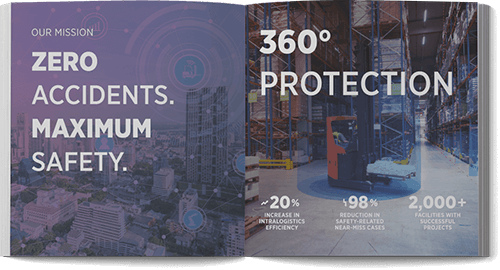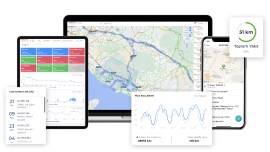Delivering food to consumers healthily and safely is a critical issue in terms of both public health and the efficiency of companies' product processes. Foods are among the products most susceptible to deterioration in all operational processes from the production stage to the consumer. Since pathogenic microorganisms start to grow above +5 degrees in perishable foodstuffs, foods must be kept below this temperature value. In order not to spoil the product quality and food values, the cold chain must be provided and managed correctly because if the chain is broken, significant problems occur in food logistics.
Nowadays, the consumers' need to reach reliable food increases the importance of controlling the cold chain and shows that the journey of food to reach the consumer should be continued with more attention. Considering the entire world population, it is seen that one-third of the food produced is lost and wasted due to spoilage and different reasons. According to the Food and Agriculture Organization, it is stated that this loss and waste is 4 billion tons in annual amount and 940 billion dollars in value and this can be enough to feed three billion people.
According to researches, the losses in the world due to the insufficient equipment of food-producing companies for the cold chain management correspond to approximately 300 billion dollars annually. In addition, it has been determined that heat-related losses in cold chain transportation have increased by 45% in recent years. While the losses of food operators in their business processes are so high, IoT technologies provide the most reliable solutions in the process of monitoring and controlling the cold chain. In this article, you can find the benefits of cold chain management with IoT technologies for food safety, waste prevention, and public health.
IoT based Cold Chain Management in the Food Industry
The cold chain is defined as all of the cold storage, cold transportation, and similar processes that must be applied in order to preserve their qualifications at every stage from the production of foodstuffs to consumption. In other words, cold chain means activities involving uninterrupted storage, distribution, and monitoring that maintain a certain temperature range. The cold chain helps to preserve and extend the shelf life of products that are often subjected to long logistics processes.
The processes until the foods reach their consumers in the cold chain are as follows: Fresh and frozen foods are delivered to the point of sale or the warehouse by keeping the cold chain in accordance with the legal regulation. Products from the manufacturer are quickly taken into protection in cold storages. Fresh and frozen foods are put on the market in different temperature aisles according to their types. Rayon temperature controls should be carried out continuously using various methods. Thanks to these stages, food can be safely shipped and stored without breaking the processes of the cold chain, and the freshness and safety conditions of the products can be maintained.
How Does Cold Chain Management Work with IoT Technology?
Cold Chain Management with IoT technologies is carried out in four steps from end to end:
- Monitoring temperature and humidity values in production facilities,
- Monitoring of temperature and humidity conditions in warehouses,
- Monitoring of temperature and humidity conditions in the vehicle during transfer,
- Follow-up of the cold chain at the arrival points of the store, restaurant, supermarket, medicine cabinet, etc.
Moreover, thanks to IoT technologies, necessary actions can be taken with the instant tracking and alarm module system in case the ambient conditions change. Thanks to the measurement of the ambient conditions, if values such as temperature, humidity, air quality are exceeded in the specified limits in cold storage cabinets, instant notifications can be sent. Thus, action can be taken quickly and food waste can be prevented. Thereby, with the end-to-end integrated system developed with wireless sensors and IoT technologies, possible deterioration and quality problems in the process of the food to the end consumer can be prevented. The continuity of cold chain management is also ensured, including the production phase in the factory, the logistics process, cold storage, and final sales point.
The food industry is one of the sectors where cold chain monitoring should be used to prevent waste, reduce product losses in logistics and ensure public health. You can also visit the Trio Mobile Cold Chain Tracking page to learn more about IoT technologies and cold chain management, and contact for solutions for your business.







